HERE ARE PHOTOS of the former Saint Joseph Church in Rhineland, Missouri. In 1979, this church was merged with Saint Martin’s in nearby Starkenburg, forming a new parish, the Church of the Risen Savior, named after Christ and His resurrection. A part of the Diocese of Jefferson City, this church is located below the north bluffs of the Missouri River in Montgomery County, about 84 highway miles west of downtown Saint Louis. This church is associated with the Shrine of Our Lady of Sorrows in Starkenburg.
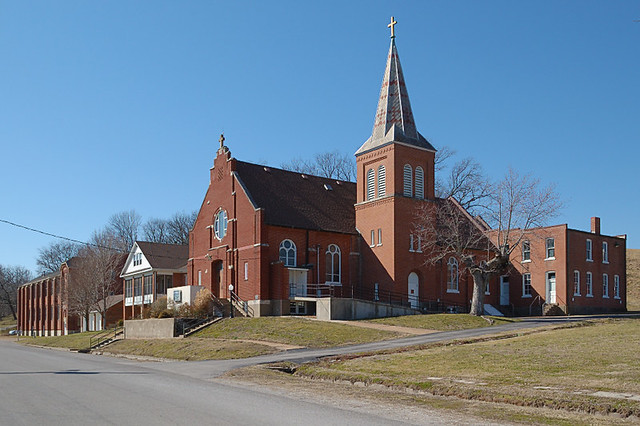
Saint Joseph’s Church, named after the foster-father of Our Lord, and patron of the Universal Church, was originally built in 1913. Before this time, Catholics hereabouts attended Saint Martin’s Church in Starkenburg, founded in 1847, and located about three miles to the northwest of here, atop the bluffs. A printed history of these parishes may be found here, but alas, very little of this parish’s history can be found online.
According to one history, the town of Rhineland is in
...south- central Loutre Township. Laid out in 1853 by Andrew Rincheval and named for the river of Germany. As early as 1837 German emigrants, who had located in Gasconade County, across the river, had begun to make a settlement here. Rincheval was killed by bushwhackers in 1863. The newer town on the M.K. and T. Railroad was laid out on November 1, 1892, by Louis Grotewiel.
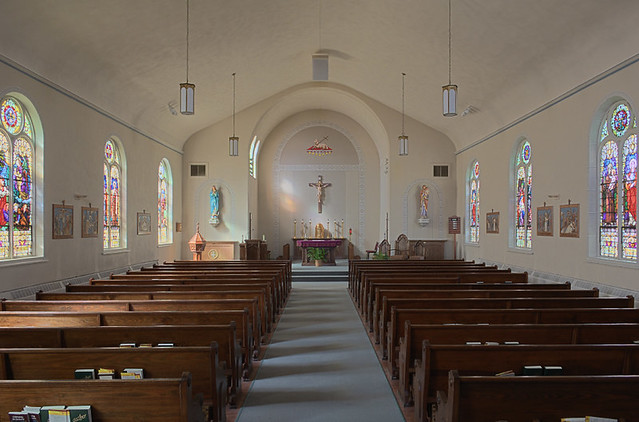
The lower Missouri River valley was once the home of various tribes of Indians, with European settlement by the French starting in the 1700s. This region was later settled in the first half of the 19th century by German immigrants who found the region similar to the valley of the Rhine. These immigrants brought their grape growing and winemaking skills with them, eventually developing the Missouri valley into one of the major regions of wine production in the U.S. until Prohibition. This region is again becoming a major producer of wine, with many vineyards on the south-facing bluffs above the river.
Immigration from Germany became a flood after the failed revolutions throughout Europe in 1848. This had great significance for the United States in the run-up to the American Civl War: formerly a solidly Southern state, large numbers of freethinkers and liberal Protestant Germans swung the politics of Missouri towards the Union. But along with the German Radicals, fellow countrymen who were Catholic also settled in this region, and these typically wanted peace and not war.
Circuit riding Jesuits often provided the Sacraments to early settlers in this region. Later, under the anti-Catholic kulturkampf of Germany’s Chancellor Bismarck, who eventually imprisoned or exiled all of the bishops of his realm, many more Catholics came into this region, including Franciscans who eventually staffed parishes hereabout.

I took these photos back in February, during Lent, and so the altar is decorated in liturgical violet.
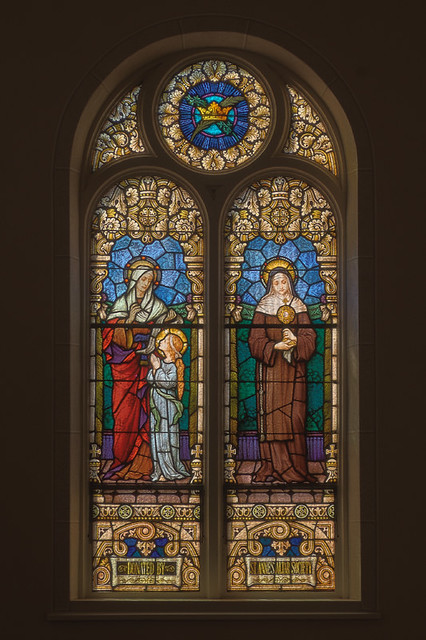
The stained glass windows are of fine quality. Here is Saint Anne with the child Mary, and Saint Clare of Assisi.

Saint Catherine of Alexandria and Saint Therese of Liseaux.
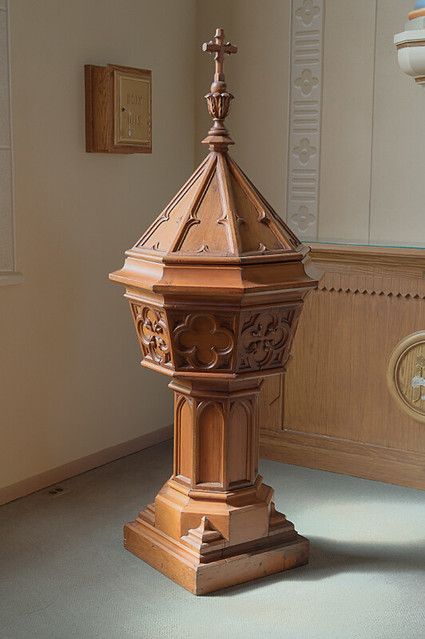
The baptismal font, with the holy oils ambry in back.
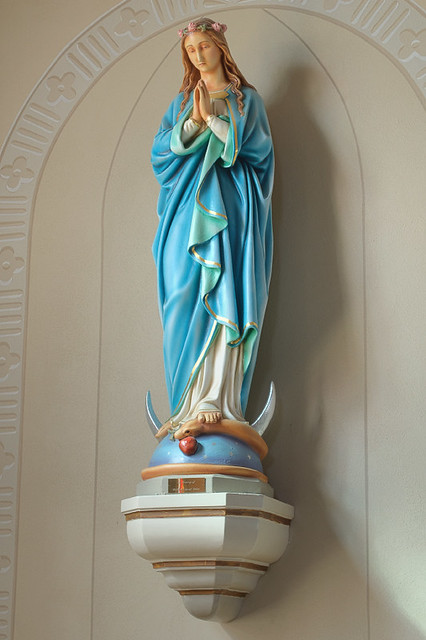
The Blessed Virgin Mary, depicted crushing the head of the serpent, Satan.
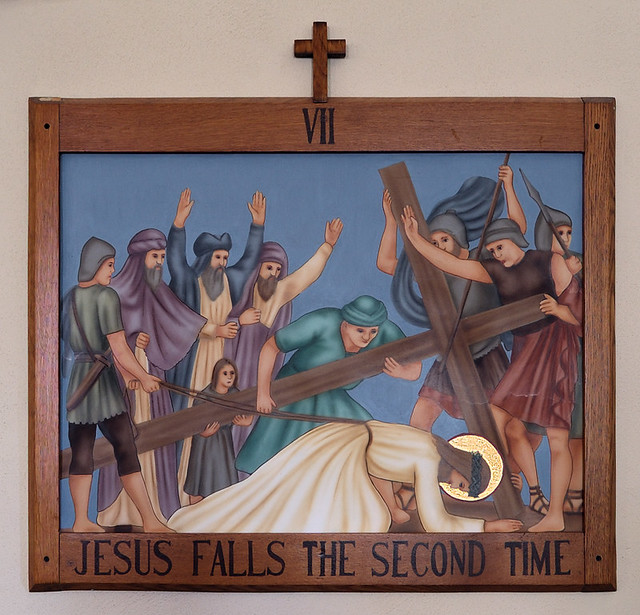
VIIth Station of the Cross: Jesus falls the second time.
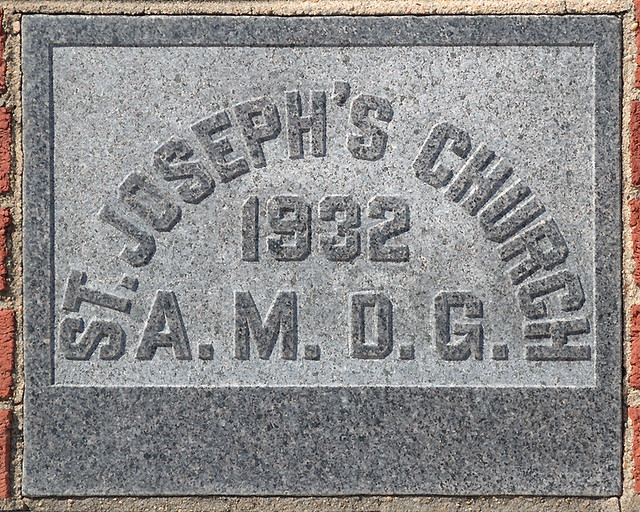
This church has two cornerstones in separate places. This one is from 1932, and another is from 1913. A.M.D.G. is an abbreviation for ad majorem Dei gloriam, “for the greater glory of God.”
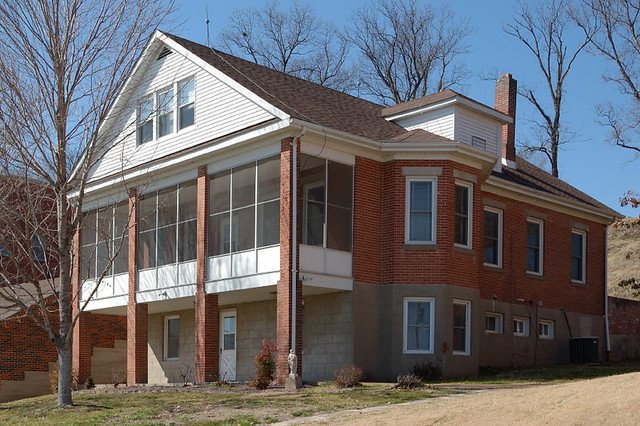
The Rectory. The church is located on a low terrace above the valley floor. Much of the town of Rhineland was relocated to higher ground after the Great Flood of ’93.
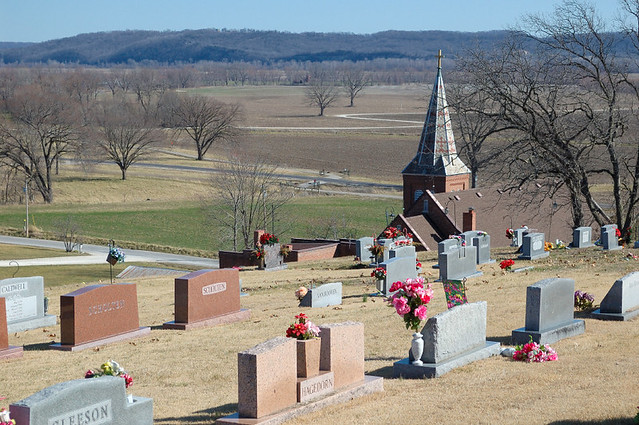
Requiescant in pace. German names predominate on the tombstones of the church cemetery, located on the steep hillside above the church. We see below the flat floodplain of the Missouri River; two to three miles away are the bluffs on the south side of the river, near the town of Hermann. The Rhineland bluffs are about 400 feet tall, are made of dolomite, and extend for about six miles between this town and Bluffton.
Address:
605 Bluff Street
Rhineland, Missouri 65069


This is one of many wonderful catholic churches to be found as you travel west on hwy. 94. it is beautifully situated and very pretty. It is easy to get to and I highly recomment a visit. Like many rural churches it is often open during the day
ReplyDelete